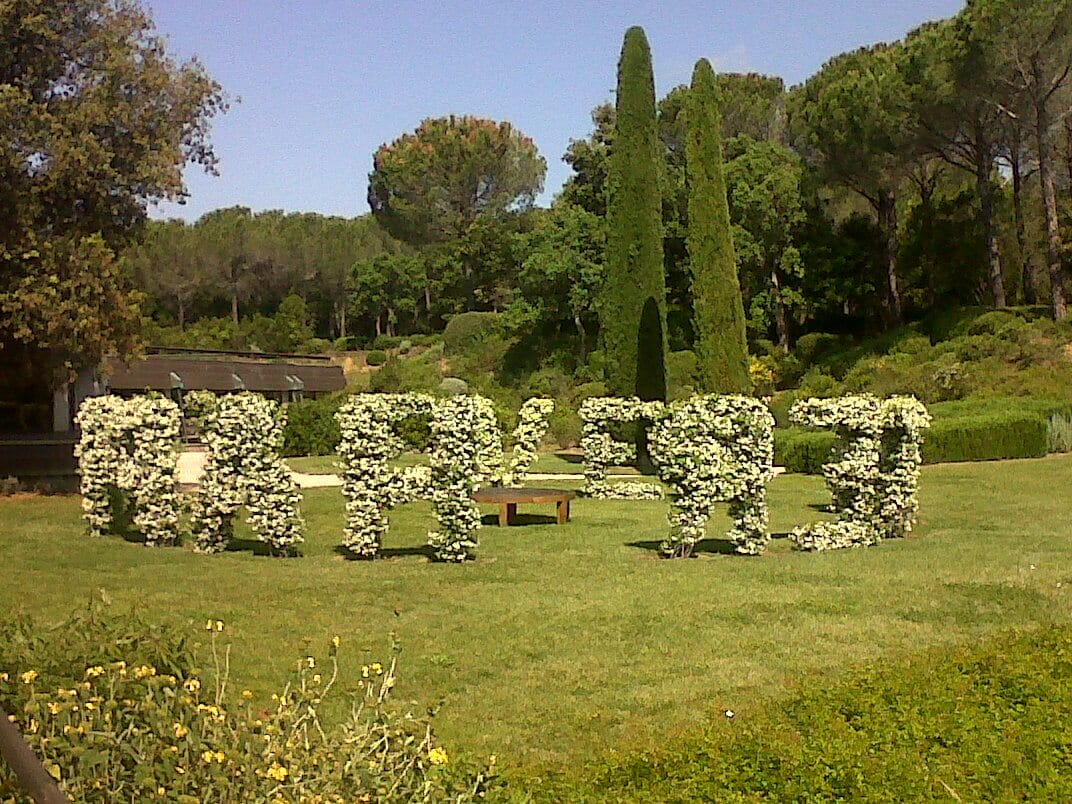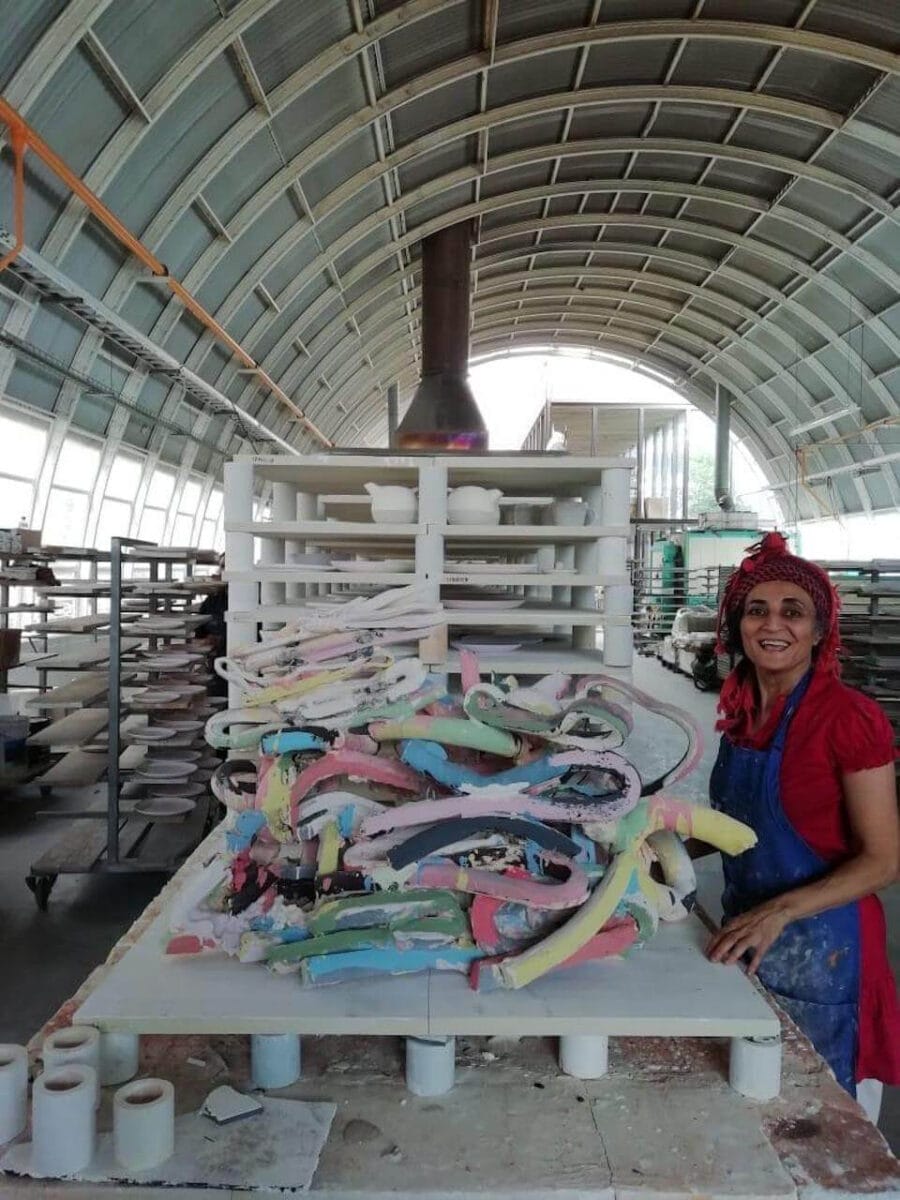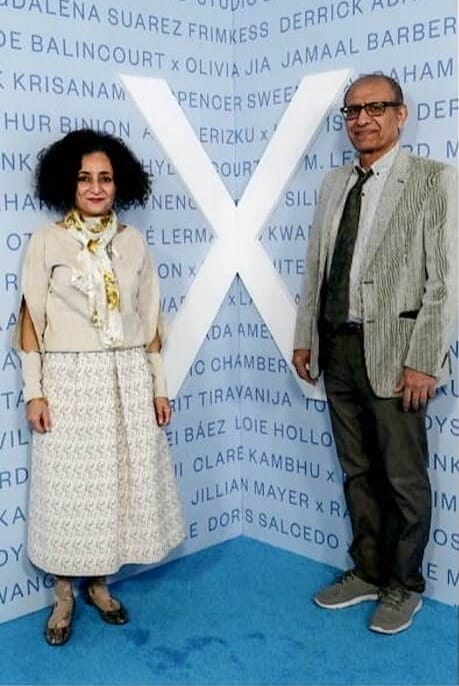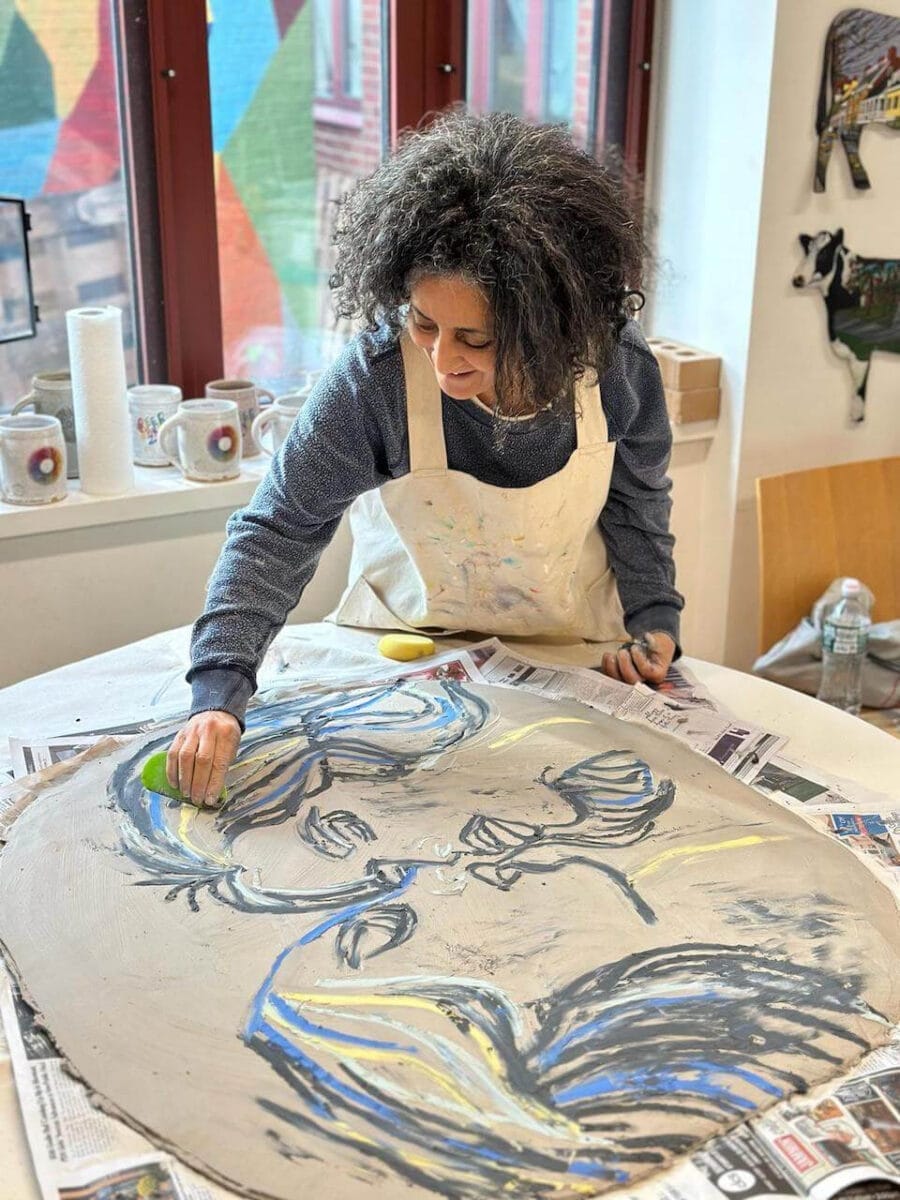Ecofelicity—happiness of the human individual, composed of organic food, a healthy blood oxygen level, regenerative sleep, lodging and ecological clothing, homeopathic medicine, nearby family and friends, fulfilling sexuality, regular physical and intellectual exercise, etc.1 2
Simultaneously creation and space of creation, the garden is constantly changing and ephemeral. Long omitted from the annals of art history, the garden is an integrative work, incorporating flora, fauna, air, light, and human ingenuity. A stroll in Ghada Amer’s gardens offers social and intellectual exercise that is essential to our ecofelicity. Since the 1990s, Amer has designed and planted gardens, providing “an alternate way to experiment and express some of the concepts present in her painting.”3 In these public spaces, Amer speaks out against violence and oppression and explores issues related to women, gender, and love. Her garden installations also tap into other aspects of ecofelicity, including breath, rest, and movement, creating a comprehensive ecofelicitous experience.
“Garden Bathing”
Escaping the bounds of a traditional museum, we contentedly “bathe” in her gardens. Akin to the Japanese practice of forest bathing, “garden bathing” fosters relaxed and aimless wandering. Amer’s “Happily Ever After” garden encircles the visitor with roses and jasmine growing on a stainless-steel structure, spelling the words “happily ever after.” A round bench sits in the middle. The viewer has a place to rest and contemplate the complexity of Amer’s work. They are surrounded, and perhaps even protected, by the greenery and the flowers, symbols of sensuality, courage, and purity.
In “Happily Ever After,” visitors immerse themselves in the smells and textures of Ghada Amer’s garden. They might graze their fingers along the stainless-steel letters and the leaves twisting around them. Then, they might sit down and feel the support of the teak bench beneath them, as they close their eyes and breathe. “Garden bathing” in the “Happily Ever After” installation enhances their ecofelicity through gentle stimulation of mind and body.
Safe and Sound in the Garden
In a time of pandemic, indoor spaces feel less safe and sometimes downright frightening. Understandably, many of us opt to limit or eliminate visits to brick-and-mortar museums. A stroll in a garden, and specifically a Ghada Amer garden, is a safe and ecofelicitous way to experience art. In her “Women’s Qualities” garden, most recently rendered in 2021, the following women’s qualities are spelled out in flower beds and arranged in a large, outdoor circle: Beautiful, Loving, Nurturing, Resilient, Strong, Caring, Determined. All of the flowers come from medicinal plants. Regardless of one’s gender identity, the message is warm and reassuring. As we amble through the large, open space, we are “held” by the women’s qualities that encircle us. In periods of isolation brought on by social distancing, the circle of flowers echoes the security of a loved one’s embrace.
Martine Antle writes, “Ghada Amer’s gardens subtly set the garden and its traditions on a new and original path.”4 I would add that her gardens set the garden and its traditions on a new, original, and ecofelicitous path. Amer opens a contemplative space, integrating movement, breath, air, and thought. These elements constitute a gift in which we move closer to balance between ourselves and the natural world, tasting ecofelicity as we wander her gardens.
Notes
1. Jardins. Exhibition catalogue. Réunion des Musées Nationaux—Grand Palais. 2017. 316.
2. Translation is mine.
3. https://ghadaamer.com/gardens/
4. https://ghadaamer.com/gardens/women-art-and-politics-in-the-sensory-garden/






